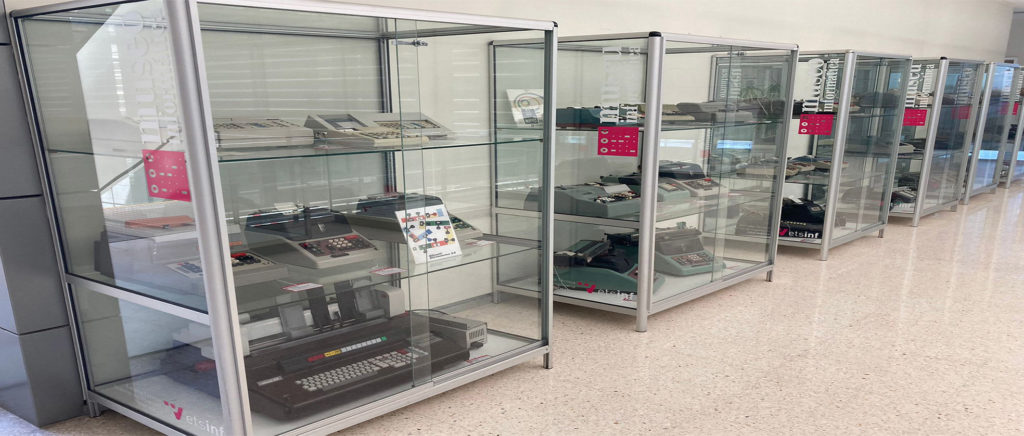The abacus, whose exact origin is uncertain, was one of the first tools used for counting. In earliest use, it was probably just a flat surface with lines arranged on the ground, where pebbles or beads could be moved. Later, abacuses were designed with movable beads inserted in parallel rods built into a wooden frame. There are different types of abacuses, which work in a similar way and are still used nowadays; namely, the Chinese suanpan, the Japanese soroban and the Russian schoty.
The scientific revolution of the 17th century served as an incentive to design mechanical tools to aid arithmetic calculations: the Neperian Abacus (1617) by John Napier, the Calculating Clock (1623) by Wilhelm Schickard, the Pascaline (1642) by Blaise Pascal and the Leibniz machine (1671). In the Pascaline, numbers are represented with metal wheels which are rotated by means of a punch. Wheels are connected to a series of gears with the aim of transmitting the carry-over of the digit situated on the left. The functioning of the Leibniz machine was based on the so called wheel or Leibniz cylinder, a cylindrical shape drum with teeth of different lengths, which rotated by using a handle.
At that same period, the French Claude Perrault designed the slotted or zipper abacus (1670), also known as the Aríthmographe, a device in which numbers are introduced by moving rules using a punch. Circle abacuses or Pascaline type abacuses work in the same way, but numbers are represented by wheels.
All these calculating instruments require high concentration of the people who operate them, either during the previous preparation of the operation or during the proper mechanical development of the calculation with the handle or punch. The aim was to reduce time and ensure the correction of the computation, especially with the most complex calculations, such as the product and division, which were performed with additions and successive subtractions respectively.
The great necessities of computation required by the industrial revolution during the XIX century motivated the design and manufacturing of new instruments. In particular, the Leibniz Wheel served as a basis for the Arithmómeter by the French Thomas Colmar, which was the first commercially successful calculating machine, and also the pinwheel calculators, designed soon after 1870 in the United States (Frank Stephen Baldwin) and Russia (Wilgott Théophile Odhner) independently. In all these machines, numbers are introduced by moving levers or buttons to the right position, while operations are performed by turning a lever: addition clockwise and subtraction counterclockwise.
Short afterward, the Comptometer (1887) by the American Dorr E. Felt, was the first key-driven mechanical calculator. Instead of making levers slide to introduce numbers and move a handle to perform the operation, every key is capable of adding or subtracting its value as soon as it is pressed. This fact allowed an expert person to be able to use all fingers simultaneously so as to introduce a number with several digits and perform an addition or subtraction with the proper touch. Due to their great velocity of computation, Comptometers were mainly used in accounting departments of banks and companies.
It is worth mentioning the proliferation of publications related with arithmetic calculation and the use of instruments. For instance, books which showed simple and rapid methods of performing operations, and those books of performed calculations or adjusted calculations oriented towards small shopkeepers, which showed results of multiplications and divisions, rules of three, calculations with dozens, equivalences among different types of coins, units of weight and volume, or the calculation of percentages and interests.
Throughout the XX century the mechanism of the key-driven to introduce numbers prevailed, and an electrical engine to make the gears spin was incorporated. The need to keep memory of the operations causes some calculators to add printing mechanisms in rolls of paper. Adding machines and pocket arithmographs became also popular. In the middle of the century, the first calculators capable of multiplying and dividing totally automatically appeared, like the ones manufactured by the Italian company Olivetti. Finally, from the 1970s all these tools were replaced by much smaller and easy to handle electronic calculators.


